
| What is Flavor and Fortune? |
| How do I subscribe? |
| How do I get past issues? |
| How do I advertise? |
| How do I contact the editor? |
Read 13101215 times
Connect me to:
| Home |
| Articles |
| Book reviews |
| Letters to the Editor |
| Newmans News and Notes |
| Recipes |
| Restaurant reviews |
| Article Index (all years, slow) |
| List of Article Years |
| Article Index (2026) |
| Article Index (last 2 years) |
| Things others say |
| Related Links |
| Log In... |
| Authors |
| Categories & Topics |
Hakka: Cuisine and Culture
| by Jacqueline M. Newman |
Chinese Ethnic Minorities and Their Foods
Summer Volume: 2018 Issue: 25(2) pages: 18 to 20
The Hakka are the largest minority in Taiwan, about fifteen percent of this island’s total population. Most are descendants of the original ‘’guest’ people,’ as they were known. For those not familiar, their name ‘Hakka’ comes from the Yue or Cantonese language. Is first syllable means ‘guest’ and the second one refers to the word ‘people.’ They are the people who moved south in five major movements beginning some thousands of years ago.
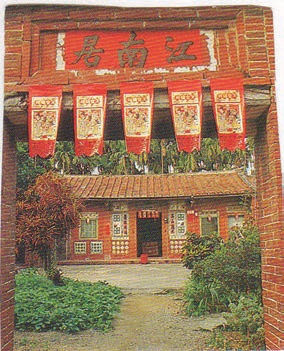
Flavor and Fortune, in the 2003 Volume 10(4) and the 2007 Volume 14(4) did discuss them. However, not much was known then about these shy folk early on. They love fu cai, a hair vegetable, and they like strong pickled mustard greens, among other foods. The words for some of their beloved foods can be seen on the banners that hang in front of their homes. Other words there tell about their ancestors, and their longevity
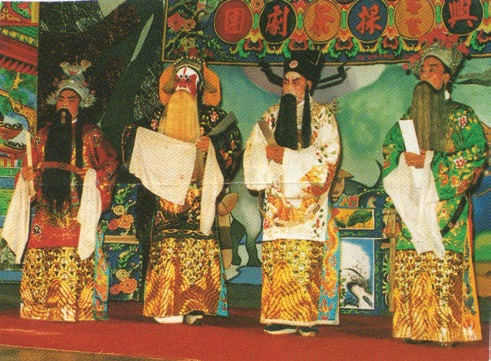
The pickled vegetables are popular, they use them to flavor their meats, vegetables, buns, even their gelatin which they make with dried shrimp or their fried eggplant, in their sheets of rice dough, with the cooked mushrooms, and their doufu. They love salt-baked chicken and many other dishes, some shown with this article. They love many simple dishes and they use foods they grow, raise, or fish for and are known for their simple hearty food gathered or grown as they moved south.
Historians report they probably originally lived in the Central Plains of China, fought invaders and intruders there, and may have even originally descended from royalty. Some say their heritage may have included Japanese, Korean, or Mongolian forebears. This they know determined from several DNA analyses done over the years.
Major Hakka migration went south when first they were considered villains. They did face lots of hostility beginning with the Qin Dynasty (265 - 420 CE). In a second one they went further south; that was during the Huang Chao Rebellion (874 - 884 CE). They moved again during the Mongol invasion of the final years of the Sung Dynasty (1127 - 1279 CE), and then moved further south, northeast, and east. In early Qing Dynasty times beginning about 1644 CE, many moved on to the Fujian Province and/or to Southeast Asia before and during the Taipeng Rebellion (1850 - 1864 CE). A good number also fled to China’s Hainan Island and soon thereafter, to Taiwan. Before, during, and since, there were additional moves. During them they did lose much of their language but added words and dialects from their then nearby neighbors, some Han and many minority populations. They also picked up dialects and holidays including Tomb Sweeping Day and other Han and minority practices. Which specific ones or when we know not.
As they learned to speak these other dialects including Hokkien, Cantonese, Han, and others, they also learned to speak the languages used in Borneo, Singapore, Malacca, and elsewhere as they settled in many different places. However, as they did, they did not lose their all-embracing Chinese identity. They did continue to worship their own god, Guandi, and they paid tribute to him twice every year. To them, he symbolized loyalty and clannishness, characteristics they still practice.
This multi-ethnic multi-linguistic population did continue to grow, some report to more than forty million in China, almost two and a half million more worldwide. They make up the cultural fabric of many a Chinatown throughout the world, and have sizable populations in southern China near Fujian, in Jiangxi, Guangxi, Guizhou, south-eastern Sichuan, Hainan Island, Hong Kong, Taiwan, Malaysia, Singapore, Indonesia, Thailand, and elsewhere.
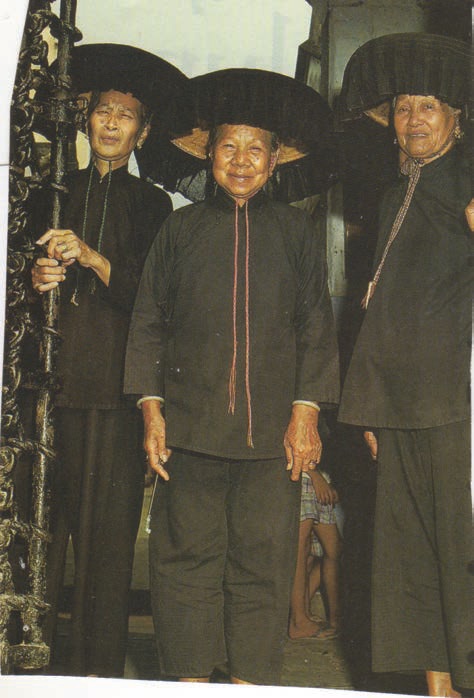
Many can be recognized tending their fields, their women wearing long black coats, black pants, and big black hats with fringe hanging down from them. Some may be listening to eight-sound- music called pa-yin, or performing tea-picking plays and other stories when not working their fields. Their men dress in similar but gray clothing. Their adults stress education, worshipping the Tang Dynasty poet and essayist Han Yu, and they burn papers with words on them considered sacred. They grow, raise, and fish for all foods they eat, and do so with gusto.
The Chinese government classifies them as Han and not a minority population. Therefore, data about them can be mixed or non-existent. They report personal success in academia and politics, and you may know some of their past leaders. Deng Xiaoping, Taiwan’s current president, Lee Teng-hui, Singapore’s current one, Lee Kwan Yeo, and Mynamar’s president named He Win come to mind. For those wanting more detail about them, read editor Nicole Constable’s, Guest People: Studies of Hakka Chinese Identity (University of California Press, 1994); S.T.Leong’s Migration and Ethnicity in Chinese History (Stanford California Press, 1997), and the Encyclopedia of the Chinese Overseas (Singapore Chinese Heritage Centre, 1998). We found only one Hakka cookbook; it is by restaurant owner Chan Yick Cheun and has only twenty- four recipes. It was published in the 1980s. Some say the Hakka inter-marry a lot and is another reason they are not easy to trace. Nowadays, they wander less since coming to Quangdong, Fujian, and Taiwan, and many say that is because they are less threatened than they were years ago.
In Taiwan, school officials used to penalize those who kept their Hakka language trying to integrate them with their neighbors. Most did refuse; they also refused to bind their feet. They remained open-minded, reacted negatively to prejudice against them, kept to themselves before and since moving and getting to Taiwan. They made the best of what they had and worked very hard.
In 1987, there was some Hakka language preservation, albeit small, and a little cultural renaissance when four Hakka journalists worked together to publicize their needs starting a magazine called Hakka Wind and Clouds, But then, they had a falling out. In 1990, they changed leadership and the publication name; it became Hakka Monthly, and soon had a circulation of some five thousand.
Others put out Hakka dictionaries, some books, and audio and video materials. All of these got a boost in 1993 when the Ministry of education allowed dialects of indigenous languages, and theirs was deemed one. They were allowed classification as electives in elementary schools and at a few small cultural camps. Also allowed were Hakka clubs in colleges. In 1988, with encouragement of mother tongue usage, there was some gradual change including the formation of the Hakka Association of Public Affairs, now known as HARA. This did support Hakka dramas and other folk arts performances in public places.
Thanks to these efforts, Hakka cuisine also had some rebirth. It is now more popular and appreciated for its hearty, savory-based efforts with preserved vegetables, and fried and stewed foods,. Now available in Hakka restaurants, it is now better known now in the US, Canada, Europe, and beyond.; and there are more Hakka restaurants in China.
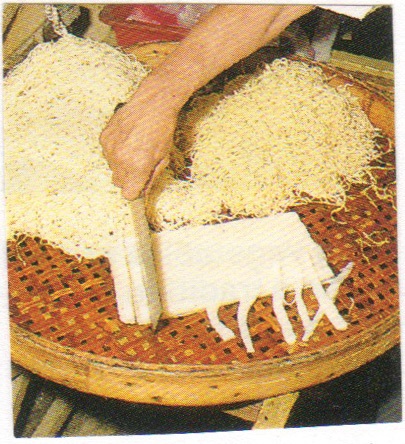
Hakka restaurant chefs share more dishes with doufu, ginger, basil, preserved vegetables, dried shrimp, and dried cuttlefish in these eateries and with the press. They use them in their steamed or stir-fried dishes that reflect their nomadic history. Many are salty or fatty, use fu tsai or fatty pork leg with preserved mustard greens, soy sauce, and they eat lots of rice called pan tiao, or their fried eggplant with local basil.
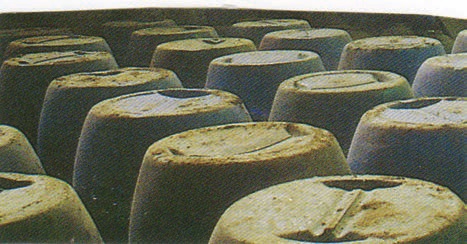
The Hakka believe salty and fatty foods are their historical roots, foods that stimulate their appetite. Their cooking is frugal, and uses everything at hand. Their fu tsai is now a ready-made big business thanks to the Kungkuan Farmers Association who dry their vegetables in the sun, put a layer of salt on them, then walk on them for about fifteen minutes to crush their greens, then stack them in large crocks topped with a large clean stones and leave them in the sun for three days before pouring off any liquid and folding them into bundles. Then they return them to the crocks, seal them., turn them upside down for three months, then sell them for use in wok cooking or steamed dishes.
Some women still make their own fu tsai to go with other foods including n their soy pudding. They also make tzu pa with preserved red rice, in the shape of a peach wishing for their longevity, or make it as green dumplings they call iai pan. One chap told us they rarely use black pepper but make many dishes spicy without it. They include fried doufu and organ meats in many of them, and still eat all they grow adding potatoes, bananas, and plantains in many of their dishes and soups. He went on to add that they love their eggplant and serve it with lots of gravy, pan tiao, salt-baked chicken, and other foods that did travel well. Below are some Hakka recipes for you to try. We hope you will like them and make them often.
| Meatball Soup |
|---|
½ pound hand-minced beef
1. Gently mix beef, soy sauce, salt, Mao Tai, sesame oil,,
egg white, and cornstarch and shape into small balls.
|
| Shark Fin Cakes |
|---|
1 pound shark fin meat, minced very fine
1. Mix minced shark fin meat and pork, add minced
celery and scallions, the rice wine, salt and pepper,
cornstarch, soy sauce, and the sugar, and take one-
tenth of this mixture and make a flat patty and set this
aside, then repeat until all are made into flat patties.
|
| Hakka Nanru Pork |
|---|
1 pound pork loin, cut into one-inch cubes
1. Mix pork, five-spice powder, sugar, soy sauce, hot
sauce, and the cornstarch and let marinate for half an
hour.
|
| Hakka Dumplings |
|---|
½ pound pork belly, rinsed well, minced
1. Mix minced pork belly, mashed duck egg, mung beans, shallots, pepper, five-spice powder, and glutinous rice. And divide this into two batches.
|
| Doufu and Mushrooms |
|---|
3 Tablespoons vegetable oil
1. Heat wok or fry pan, add the oil, and fry the doufu
until lightly browned, then remove to a small bowl.
|
| Salt-Baked Chicken |
|---|
1 whole chicken, dried with paper towels
1. Rub the inside and out of the chicken with the Mao Tai
and the teaspoon of salt, then wrap and tie the chicken
in the cheesecloth knotting it top and bottom of the
bird.
|
| Hakka Sour Pig's Feet |
|---|
½ cup vegetable oil
1. Heat oil in a wok or deep fry pan, fry garlic and ginger,
then add the pigs feet pieces and fry then for three
minutes.
|
| Stomach Ache Healing Tea |
|---|
1 ripe plantain, mashed
1. Mix mashed plantain, sesame seeds, crushed peanuts,
and the tea leaves and set aside for an hour.
|

Copyright © 1994-2026 by ISACC, all rights reserved
Address
3 Jefferson Ferry Drive
S. Setauket NY 11720